
An AV receiver is integral to a passive home theater system, but they don’t need to be expensive to deliver amazing audio and video signals. Our experts have sorted through models to bring you the best AV receivers under 500 so you’re not spending a penny more than you have to.
Reviews of the Best AV Receivers Under $500
1. Sony STR-DN1080 7.2 ch Surround Sound Home Theater AV Receiver
The Sony STR-DN1080 is a big step up from the Sony STR-DH790 and is one of the best AV receivers under 500. The STR-DN1080 has the best audio format compatibilities including Dolby Atmos and DTS X object-based surround sound settings.
There is also a specialized surround sound format called Phantom Surround Setting. Although the STR-DN1080 is a 5 speaker setup, the Phantom Surround Setting can make it seem like you have 7 channels [1] for an immersive experience.
The multifunctional system also supports 4K video passthrough and is 4K HDR compatible as well. The receiver has Google Chromecast built-in and can also work with Apple Airplay multi-room and Google Home.
Pros
- Brings home cinema sound
- Google Chromecast
- Phantom Surround Setting
- Dolby Atmos and DTS X
- Supports 4K video passthrough
- 4K HDR compatible
- Works with many external streaming devices
- Can handle 1155 watts
- Auto calibration with speaker relocation technology
- 6 HDMI inputs and 2 outputs
- USB port
- Optical digital connection
- Analog AV connections
- eARC
- Wi-Fi Bluetooth enabled
Cons
- Small display screen
- Larger size
2. Yamaha RX-V4A 5.2-Channel AV Receiver
The Yamaha RX-V4A AV receiver is equipped with the latest processing technology. What you enjoyed with big screen content can now be enjoyed on your smaller screen.
This Yamaha RX-V4A home theater receiver can go up to 8K with future support. It brings you the best audio technologies such as Dolby Vision, Dolby TrueHD and more through HDMI ports.
The HDR 10+ delivers a dynamic range of colors, mimicking the spectrum in real-life to deliver an accurate portrayal of what is onscreen. If you like gaming, the Yamaha RX-V4A is the optimal choice for its enhanced gaming functionality, which will be available via future updates.
Pros
- Supports 4K Ultra HD
- Can upgrade to 8K
- Wi-Fi, Bluetooth for multi-room MusicCast and streaming
- Can be built into a true surround home theater system
- YPAO room calibration
- Works with Amazon Alexa and Google Assistant
- MusicCast controller app for easy control
- Four HDMI inputs and one output
- Dolby Vision
- Dolby Atmos and DTS:X
- Comes with a remote control
- Works with streaming services such as Pandora, Spotify Connect, Napster, SiriusXM, TIDAL, Deezer, Qobuz, Amazon Music
Cons
- MusicCast can only be used by itself
- Can’t process uncompressed signals
3. Denon AVR-S750H Receiver
The Denon AVR-S750H is our expert team’s first choice for user interface. It’s easy to see your settings on the receiver, thanks to its large screen. The buttons are wide and the control knobs are easy to maneuver.
As for the audio and video processing, the Denon AVR-S750H is set to deliver 3D crystal clear signals. With the help of eARC, the Denon receiver produces heightened sound effects with Dolby Atmos Height Virtualization. This brings another level of realism to the audio and visuals.
With Wi-Fi, Airplay or Bluetooth with HEOS multi-room wireless speakers, the AVR-S750H AV receiver can create a multi-room system with impressive power output.
Pros
- eARC
- Dolby Atmos Height Virtualization
- Wi-Fi, Airplay, Bluetooth
- HDR10 Dolby Vision
- Works with music streaming services such as Spotify connect
- Onscreen assistant to help with the setup
- Customizable surround sound
- 6 HDMI inputs and 1 output
- EQ calibration
- Can be built into a 7.2 channel AV receiver system
- DTS:X and DTS Virtual X
- 4K supported
- Works with Amazon Alexa and Google Assistant
- Works with Apple Siri
Cons
- Poor customer support
- Can be hard to control
AV Receiver Under 500 Buyer’s Guide
Our experts will now dive deep into the different features to look for in an AV receiver to help you choose the best AV receivers under 500.
Size and Design
A big factor that will impact your decision when choosing the best AV receiver for your home theater is the size and design. The design encompasses what type of connections your receiver features, the placement of the control knobs, and more.
Our experts recommend an AV receiver with at least 7 channels. Seven is the optimal number for impressive and all-encompassing surround sound.
Sure, you can get a surround sound experience with just 5 channels, but 7 is where you can really experience the multi-layers of audio that the regular 5-channel setup cannot produce. Even if your home theater system is only a 2 or 3 channel one, you can always build on your system in the future. Therefore, you would want an AV receiver that can take the power output.
A 7-channel design, more specifically, a 7.2 channel allowance on your AV receiver will give you the flexibility to adapt your speakers to different settings. You can even enjoy high quality sound outdoors with this amount of power. Make sure your AV receiver supports whatever surround sound system you intend to build.
The next important factor to consider is the size. Think about your living room setup and height speakers, among other equipment. To create an audio sweet spot, you need to angle your speakers and soundbar when applicable to a focused spot. If you have upward-firing height speakers for example, you may want to place them lower on the ground.
If all attached components are placed lower, your AV receiver should follow suit. Make sure you are purchasing the right size for your needs, but our experts say that most AV receiver options under 500 are not far off each other in size.
The next part is to take a look at the interface. You want an easy-to-use interface with a straightforward design, clearly labeled buttons and intuitive controls. The options on our top list all fit nicely under this category such as the Yamaha RX-V4A and the Denon AVR S750H, but a few other options worth considering are the Onkyo TX series, Yamaha RX V485, Marantz NR1609, Pioneer VSX series, among others.
In general, look for a large display screen with easy-to-read numbers and letters. There should be a backlight for low light conditions and some colors can even be customized to your liking. The control panel should have the basic inputs available such as source, on/off buttons, etc., and they should all be clearly labeled with easy-to-read font.
Does the receiver have rubber feet or stoppers at the bottom to prevent it from slipping and sliding? When placed on a flat surface, you want your receiver to have a steady foothold on the floor or countertop and not slip around.
Take a look at the back. All the connection ports are located on the back of the device. Having more connection ports is a benefit, but don’t compromise the space you have for more connections. If placed too closely together, it can be hard for you to plug and unplug cables without jostling the ones around it.
As an extra tip, for those who want an ultra slim AV receiver, our experts say the Marantz NR1609 has a very slender profile.
Power Capacity
Good sound is all about the power, right? To an extent, yes. The power output is also one of the toughest factors to identify for your home theater AV receiver.
Much of what the box says about watts per channel may not be the full story. For example, you may find an AV receiver labeled as 125 or 200 watts per channel only to find that you get less than a quarter of that when it comes to clean power delivery.
The number and quality of the watts per channel output also diminishes with the more speakers you connect to your AV receivers under 500. A good rule of thumb to help you gauge the amount of power you need and the watts per channel is to consider your room size and the speakers you’re connecting.
If you are not too familiar with the power capacity or the lingo in the specifications of these devices, our experts have given you a general guideline. In terms of impedance, our team says 8 ohms is optimal. You may find an AV receiver with a bit less or more than that, but 8 ohms is a good place to start.
8 ohms refers to the impedance of your electrical current. How much resistance your AV receiver has is measured in ohms. 8 ohms is the standard and most common measurement.
As for the frequency, our experts say 80 Hz 20 kHz is a good place to start. The 80 Hz 20 khz is a pretty standard measurement that most AV receivers encompass.
Another feature to consider is the max wattage. How much can your receiver handle?
Determine this by looking at the peak power and RMS of your connected devices or speakers to make sure you won’t overload your system. This is the key to keeping your receiver working for a long time without having to replace it. Even if you are looking at devices that are more affordable and under 500, it’s still a large sum of money to spend and you don’t want to replace it any time soon.
Number of Ports
Our experts say it’s always better to go with more inputs and outputs with more wattage handling just in case you need it in the future. After all, the worst thing that can happen is to leave these inputs and outputs unused.
As mentioned before, the number of ports the AV receiver under 500 offers is vital to the design and your usage. Most AV receivers worth their salt will have at least four HDMI ports. However, we have found that number to be insufficient for a full home theater system. Our experts recommend 7 just in case you need more in the future.
Our experts say it’s also worth it to note that HDCP 2.2 compatible HDMI connection is the best. This is because an HDCP 2.2 connection means your AV receiver supports a secure connection between the source of the signals and your TV. Look at your HDMI cable to make sure it is HDCP 2.2 compatible.
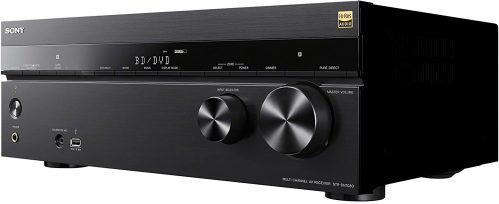
Having more ports, even if they are unused in the beginning, will give you room to build and grow your system into a multi-room audio beast. HDMI is our experts’ recommended method of connection to support 4K ultra HD, 4K HDR, HDR10 Dolby Vision HLG, DTS Play Fi, DTS Neural X, DTS HD Master, HLG and BT 2020 and many other audio formats.
Of course, just like with all other audio devices, your AV receiver will also feature other forms of connection aside from HDMI ports. You will also find analog AV connections such as RCA, and optical digital connection as well as a USB port.
Aside from the options on our list, our experts also recommend looking at the Onkyo TX series, Yamaha RX V485, Marantz NR1609, Pioneer VSX series AV receivers, among others.
Wireless Connectivity
Most technological devices nowadays have wireless connectivity for user convenience with Wi Fi and Bluetooth. Now that we know what to look for if you prefer a wired connection, this section is for a cable-less hookup.
You can find built-in Bluetooth on most AV receivers under 500, and the Bluetooth wireless technology can stream content from other enabled devices such as your smartphone or tablet. The quality may not be exactly the same as connection through HDMI ports, but the difference is barely noticeable and a decent home theater AV receiver can support high quality formats wirelessly.
If you choose to go the Bluetooth route, our team advises to place your Bluetooth enabled device close to the receiver. This is because the closer the two devices are, the stronger and more stable the connection is.
Other than Bluetooth, Wi-Fi is another form of wireless connection that can work with your virtual assistants, and used for connection to other devices and tap into your home network. Dual band Wi fi is excellent if you have it as it allows you to connect to two networks and won’t congest the traffic.
Wi-Fi is the easiest option to transform your 2 channel home theater system into a fully functioning 7.2 channel surround sound mega system. The WiFi will also relay signals to a multi-zone setup. These zones, like zone 2 or zone 3 when applicable, relate to the different parts of your home these signals are transmitted to.
Zone 2 could be your bedroom or bathroom or any other room you want to experience enhanced audio in. You can go up to 3 zones or whatever you prefer, but most people find zone 2 to be enough.
Added Features
To set themselves apart from the rest, many brands such as the Onkyo TX, need to have special added features in their receivers under 500. Look for audio technologies in receivers under 500 that include 4K ultra HD, 4K HDR, HDR10 Dolby Vision HLG, DTS Play Fi, DTS Neural X, DTS HD Master and more for the best sound quality.
An AV receiver that offers compatibility for common music streaming services such as Pandora and video streaming services such as Netflix automatically earn a place that’s higher on our list.
There are even AV receivers that have auto room tuning capabilities and fancy bells and whistles such as EQ calibration or YPAO room calibration.
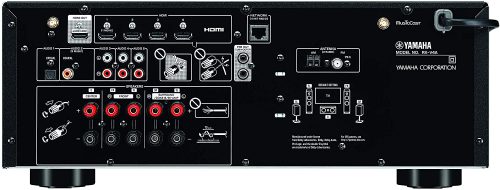
To make your life easier when setting up and controlling your AV receiver, some even offer a virtual setup assistant and compatibility with Alexa, Google Assistant and even Siri. These invisible helpers can carry out basic commands with the sound of your voice.
If you don’t like using a remote control, there are tons of 4K Ultra HD supporting receivers under 500 that can boost the sound quality from the compatible app. These apps will allow you to input your preferred settings and even calibrate the receiver to produce your preferred acoustic effects.
Many people are worried about the price range for receivers under 500 that have many bonus add-ons. However, all of the added features we listed above fall under the 500 price range in models such as the ones on our list and the Onkyo TX series.
FAQ
What is the best AV receiver for under 500?
The best AV receiver for under 500 is the Sony STR-DN1080. The STR-DN1080 receiver features support for all the latest audio and video technologies such as 4K ultra HD, high quality connections via HDMI ports and has both Bluetooth and WiFi for wireless streaming.
Which receiver brand is best?
The best receiver brand would be Sony – the Sony STR-DN1080 to be exact. Sony has consistently created high quality systems, which also applies to their receivers. The STR-DN1080 supports 4K and has a high power rating per channel.
How long do AV receivers last?
AV receivers can last for many years. The Onkyo TX series receiver is robust and carries out its task for a long time. As long as you do not overpower the system by plugging in speakers with incorrect power outputs and do the occasional maintenance, your receiver will have a long lifespan.
Do AV receivers improve sound quality?
Yes, an AV receiver can improve sound quality. However, it doesn’t create better audio quality but instead allows you to manage it better across your devices. It can support advanced technologies such as Dolby and DTS, and amplify the sound from the source to improve sound quality.
Do AV receivers improve picture quality?
Yes, AV receivers improve picture quality. They can clean up low quality signals with functions such as upscaling. While it doesn’t produce high quality pictures, a receiver supports the existing high definition format and relays it to your screen.
Are AV receivers worth it?
Yes, AV receivers are worth it. An AV receiver not only has a hand in improving your sound quality, but the picture quality as well. With an AV receiver, you can connect multiple devices and create the home theater of your dreams.
Do I need an AV receiver with a soundbar?
Yes, you need an AV receiver with a soundbar. However, this is only true if you have opted for a passive soundbar. A passive soundbar does not have a built-in amplifier, If you have an active soundbar, you will not need an extra receiver because the amplifier is already built in.
Our Top Pick For an AV Receiver Under $500: Sony STR-DN1080
Our team’s final pick for the best AV receiver under 500 is the Sony STR-DN1080. This is one amazing receiver that can blow other models such as the Onkyo TX series out of the water. Other receivers under 500 don’t match up to the STR-DN1080 because of the supported audio formats, wireless compatibility, the amazing 7.2 channel design, and surround sound.
For audio formats, the Sony receiver can process Dolby Atmos and DTS object-based surround sound. This means it can calibrate itself to match the setup of your room for unhindered audio emission. With this receiver, you can experience surround sound and find your sweet spot easily.
The STR-DN1080 has multiple HDMI ports and other forms of connection including a USB port to make playing content even easier.
The post What is the Best AV Receiver Under 500? Equip Your Home Theater For a Fuller Experience appeared first on The Product Analyst.
from The Product Analyst https://theproductanalyst.com/best-av-receiver-under-500/
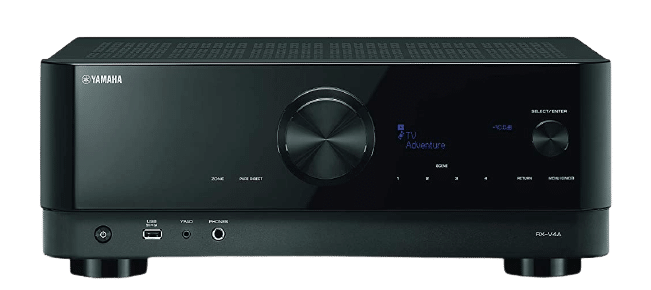
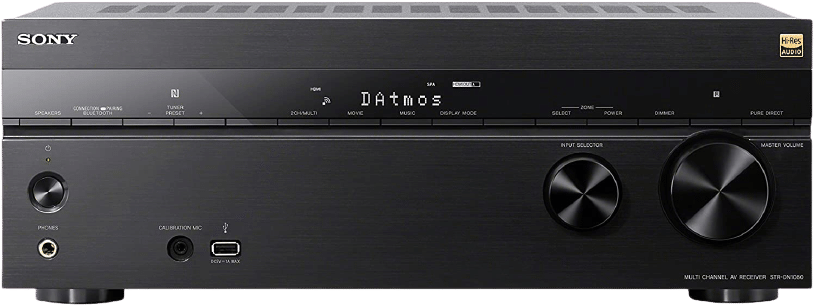
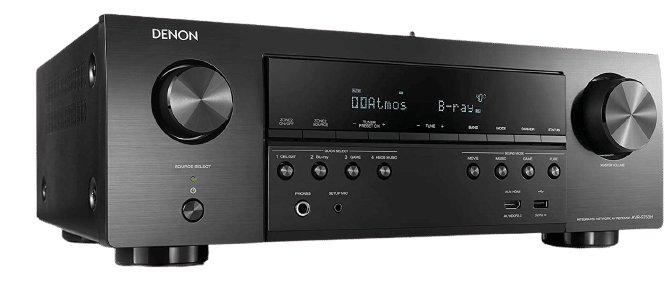
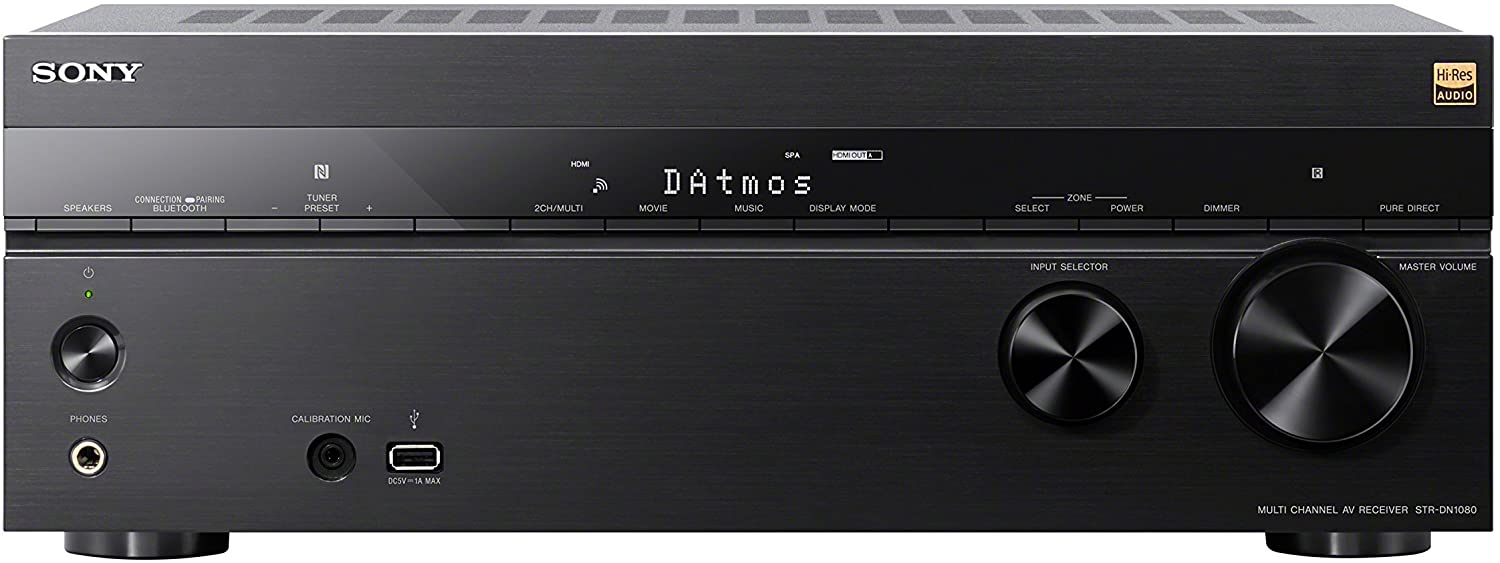
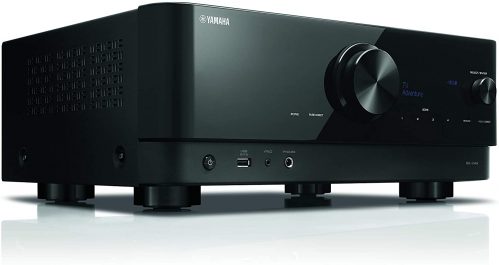
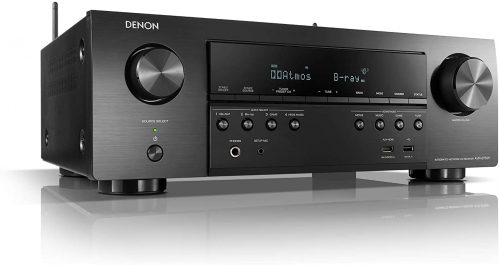
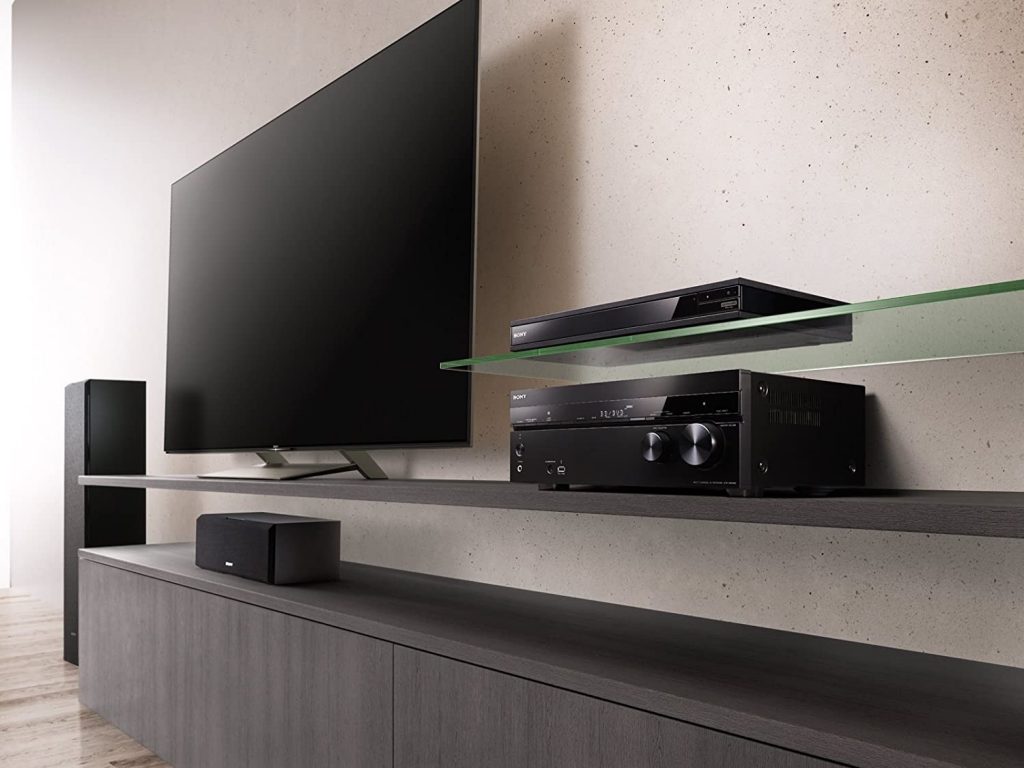
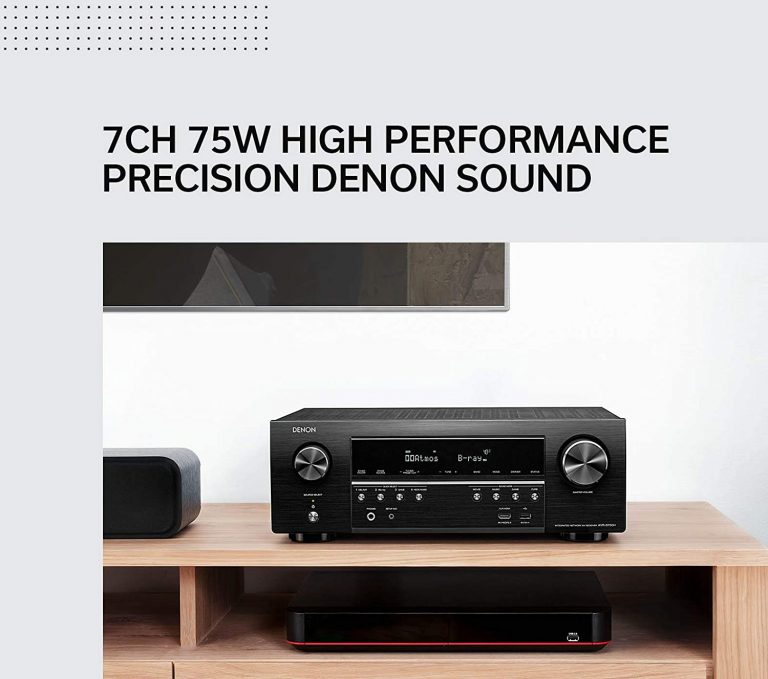
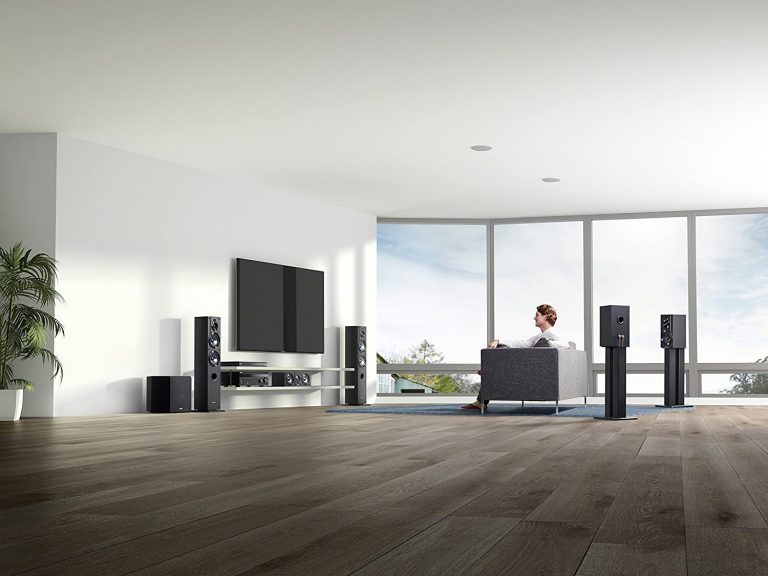
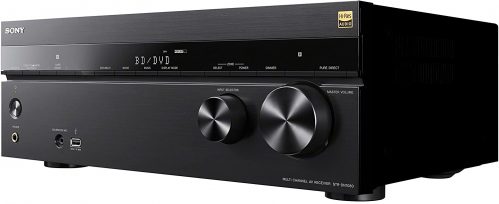
No comments:
Post a Comment